A POWERFUL BUT OFTEN OVERLOOKED TOOL
Over the years, BentOak Capital advisors have advised and assisted numerous clients in deferring thousands of dollars in taxes on real estate transactions using the legal deferral techniques afforded under IRC Section 1031. This long-standing Code section allows taxpayers to defer taxes on real estate transactions if the rules are followed correctly.
I mention “delayed,” which means putting off the paying of taxes until later, often many years later, when the property acquired under the Section 1031 transaction is sold. And even then, when that second property is sold, it is possible to repeat the process with another new property, deferring taxes yet again. I have seen real estate investors use this technique to significantly increase the value of their real estate holdings while holding the IRS at bay for many years.
In some cases, the clients not only deferred (put off) the big tax bill but were able to convert the deferral into permanent tax savings when combined with another tax tool- the step-up in basis at death rules. The step-up instrument is beyond the central theme of this writing, but it is worth mentioning to get you to think longer-term for your family. This turns a multi-year strategy into an intergenerational approach to saving taxes and building family wealth.
IRC Section 1031 has been around since 1921. It is often missed because of not knowing about it, misunderstanding that it is too complicated, and failing to follow a few simple rules and timelines.
THE RULES
To successfully execute a tax-delayed Section 1031 Transfer, a few basics must be met.
- Must exchange qualified property for qualified property.
- Must adequately identify replacement property within 45 days of the first sale’s closing date.
- Must consummate the property replacement within 180 days of closing the sale or by the due date of the taxpayer’s tax return, including any extensions, whichever is earlier.
- Must be a US property.
- Any boot received is taxable. The boot is fancy jargon, meaning you will pay tax on that amount. See the discussion below for what constitutes boot.
- The transaction must be executed by a qualified intermediary who is a person or entity who is not considered a party of the transaction nor the agent of the taxpayer. One of the most common mistakes taxpayers make is receiving funds at closing the relinquished property’s sale. If you receive the proceeds, you just killed the 1031 benefit. Not using an intermediary but directly receiving net proceeds at the closing of the relinquished invalidates a like-kind transaction. It does not matter if you promptly identify and replace the property if you touch the money directly; Section 1031 is no longer available. All hopes of deferring taxes are then dead. Always, always use an intermediary.
QUALIFIED PROPERTY
The rules for determining properties that are acceptable for a 1031 exchange are reasonably broad and flexible:
- It must be a US Property.
- It must be for business or investment purposes.
- It cannot be for personal use such as a private residence, second home, or vacation home.
Exchanges do not have to be like-for-like. It is legal to exchange an improved property for an improved property, an improved for an unimproved property, a city property for a rural or agricultural property, real estate for water rights, real estate for air rights, and the list goes on as long as the properties are not foreign or for personal use.
THE 45-DAY IDENTIFICATION RULE
To qualify, the taxpayer must execute a written document signed and delivered to the replacement property owner and any other person involved in the exchange such as an intermediary, an escrow agent, or a title company within 45 days of the sale of the old property. This document should be signed by all parties before the end of the 45 days, and should describe the proposed new property specifically, using address, a distinguishable name, or a legal description.
If another property is not identified before the 45-day deadline, the like-kind favorable treatment ends. The only exception to the 45-day rule is if the property is located in a federal disaster area. If the deal falls apart near the end or a tornado destroys the property, the 45-day rule still applies. Due to this hard and fast rule, the taxpayer is allowed and is advised to identify up to three potential replacement properties. Alternatively, you are allowed to diversify across multiple properties so long as the aggregate fair market value as of the end of the identification period does not exceed 200% of the fair market value of all the relinquished properties being sold. You may also revoke any identified property (and/or replace it) during the 45-day window.
THE 180-DAY RULE FOR COMPLETION
In order to qualify for a 1031 exchange, the new property must be acquired within 180 days of the sale of the relinquished property or by the due date of the taxpayer’s tax return, whichever is earliest. There are two important things to note here. You may want to file an extension on your tax return. Depending on what time of year the original sale occurs, it might be troublesome or not practical to execute the replacement transaction before the traditional April 15th due date for tax filing. The automatically granted tax return extension solves this dilemma. Remember that the six-month tax filing extension does not extend the 180-day replacement rule. If the replacement property is new construction or remodeling and not completed by the end of the 180 days, the property would still qualify as a qualified property if its completed state would have been qualified. For example, if a new commercial building is 80% complete, the 80% could be classified as eligible property. But the danger is that enough money may not have been expended by the 180-day deadline. Even if more money is spent to complete the project, later expenditures would not count as qualified replacements since they occurred after the 180-day deadline. As a result, the taxpayer could have received a boot (see the next point for a discussion of boot) for the late expenditures, and that amount could all or partially be taxable.
BOOT
“Boot” is anything the taxpayer receives in a Section 1031 exchange that is not considered a “like-kind” property. Any boot received is regarded as a taxable gain. This could include cash, property other than real property (such as stock or other personal assets), or net debt relief assumed by another party involved in the like-kind exchange. Receiving boot is not necessarily bad depending upon the transaction’s economic facts or your ultimate goal from the transaction. However, you should understand the transactions tax consequences well, and seeking competent advice beforehand is recommended.
QUALIFIED INTERMEDIARY
You must use a qualified intermediary (QI) to meet all the requirements of Section 1031. This point cannot be over-emphasized. The QI enters into a written agreement with the taxpayer (the “exchange agreement”) and, as required by the exchange agreement, acquires the relinquished property from the taxpayer, transfers the relinquished property, acquires the replacement property from a third party under the taxpayer’s instructions and executed contract, and then transfers the replacement property to the taxpayer. Through this process and using an escrow account, the transactions are consummated and have met an essential requirement of the taxpayer not receiving the money directly. We would suggest that a cost analysis of the qualified intermediary’s fee versus the taxes saved should be considered in determining the economic benefit of a 1031 exchange. That said, intermediaries are relatively inexpensive, and in our experience the tax savings will most likely be worth the extra closing costs.
WHEN NOT TO USE SECTION 1031
Sometimes, it does not make economic sense to pursue a like-kind exchange. You may not have an interest in holding more real estate and want to divest the related issues of maintenance, property taxes, renting, collecting of rent, etc.
You may not want to put forth the effort to locate and purchase replacement property within the required timelines. You may need or want the sales cash proceeds for other uses other than new real estate property. If the gain from the sale of property is small and the resulting tax savings would be nominal, there probably is no benefit to exercising Section 1031. For instance, if the property sold is from a recent inheritance, there is a strong possibility that the basis may be close to the sales price due to the previously mentioned step-up in basis rules. In this case, there might be low or no taxable gains. If the property is being sold for a loss, there would be no benefit to executing a deferred exchange for tax purposes.
Similarly, if your taxable income including the gains from sale of your original property is low enough (less than $41,675 for a single taxpayer or $83,550 for joint taxpayers) you will pay a 0% long term capital gains tax. In this situation, there is very likely no benefit for a deferred tax exchange. However, as with all the points raised in this blog post, we recommend having a tax professional conduct preliminary tax projections to determine if Section 1031 makes sense considering the transaction and related gain along with your total tax situation.
WHEN TO CONSIDER A 1031 EXCHANGE
You should strongly consider a 1031 exchange if any of these reasons might apply to you.
If the taxes triggered by the sale of your current property will be significant enough to reach the “it hurts” level.
If you are looking to upgrade your current real estate holding and not paying taxes from an upgrade until you must.
If you are interested in continuing to hold real estate and build a larger real estate portfolio in a tax-efficient manner.
If you are comfortable in seeking out and paying a reasonable amount for a professional to assist you in significantly reducing the potential taxes from a sale, then you should investigate further. In addition to the traditional real estate agent, you need to hire a Qualified Intermediary. It is also highly recommended that you retain a tax professional with experience in real estate.
KEEP THESE THINGS IN MIND
Related Party Transactions
The IRS exercises more scrutiny over exchanges involving related parties due to possible abuse or imaginative ways of skirting around the general purposes of the law, including a frowned-upon strategy called “tax basis shifting” between high and lower-income family members. Some related parties generally include persons related by blood, marriage, entity ownership by the taxpayers, or family members.
A grantor or living trust is considered the same as the taxpayer. A single-member LLC or disregarded entity is regarded as the same as the taxpayer for this tax treatment. A partnership involving non-family is not considered related, but a family partnership between a parent and child is considered related.
A like-kind transaction involving related parties can be tricky and need more caution to execute. If the IRS determines the primary reason for the transaction is solely tax avoidance, tax-deferred treatment could be denied. Again, the value of an experienced and qualified intermediary helps comply with the regulations. With this said, most related party transactions may have merit and can be executed under like-kind rules. However, there is a unique two-year holding period rule for related parties.
If an exchanged property sells less than two years following a related party exchange, the related parties are considered to have cashed out of the property, and the original exchange is not accorded the favorable tax treatment. This punitive rule does not apply in case of the taxpayer’s death or if under compulsory conversions, such as the exercise of a local government’s practice of eminent domain.
Other Details
For determining holding periods for capital gains treatment, the holding period of the replaced property also becomes the holding period of the new replacement property. In most cases, the holding period will qualify for long-term capital gains treatment if later sold. Any boot given (cash paid or extra debt incurred) at the time of the exchange could result in an increased basis in the property up and above the basis of the exchanged property. This additional investment amount begins with a new holding period when the exchange transaction is executed, is considered initially as a short-term asset, and starts with a new depreciation calculation rate applicable for any other comparable new asset at the time.
If a relinquished property is not fully depreciated, the substituted basis of the new replacement property is depreciated over the remaining recovery period, using the same depreciation method and convention as was used for the relinquished property.
It is highly recommended that a property acquired in an exchange not be disposed of in the same tax year to decrease any IRS scrutiny and questions about the purpose of the exchange. Practically, it might be best to hold the property for at least a year, for there be no doubt of long-term capital gains treatment for the entire property.
Successfully Executing a 1031 Exchange
Remember to follow the guidelines previously discussed regarding qualified property, identification, and replacement periods.
When you sign a contract to sell a property, you might mention that you intend to execute a Section 1031 Exchange. However, it is unnecessary, and not all is lost if you don’t mention it in the contract; the main thing is to notify the title company or closing agent that you are interested in a 1031 Exchange.
The title company or attorney should have contacts for preferred and competent qualified intermediaries. Once you have indicated that you are interested in an exchange, the title company can begin to work with an intermediary. From there, the proper legal paperwork and all documentation can be prepared and executed by the intermediary, who coordinates the related closings with the title or escrow company.
The job of the title or escrow company and the Qualified Intermediary is to assist in following all the regulations previously mentioned. Your job is to identify and execute contracts for the replacement property. With a competent team, you can achieve it without much extra effort.
What if you decide to quit the like-kind exchange process or if you can’t find desirable replacement properties within the deadline? In this case, you are not required to continue the process, but then you can go to closing on the sale of the property like any other sale. In this case, you simply receive the sales proceeds. Come tax filing time, you will be obligated to pay any related taxes on the property sale.
If you would like to discuss 1031 exchanges with a BentOak Capital advisor. you can reach us by completing the form linked above or by calling one of our three Texas offices.
This information is not intended to be a substitute for specific individualized tax advice. We suggest that you discuss your specific tax issues with a qualified tax advisor.
The opinions voiced in this material are for general information only and are not intended to provide specific advice or recommendations for any individual. All performance referenced is historical and is no guarantee of future results. All indices are unmanaged and may not be invested into directly.







